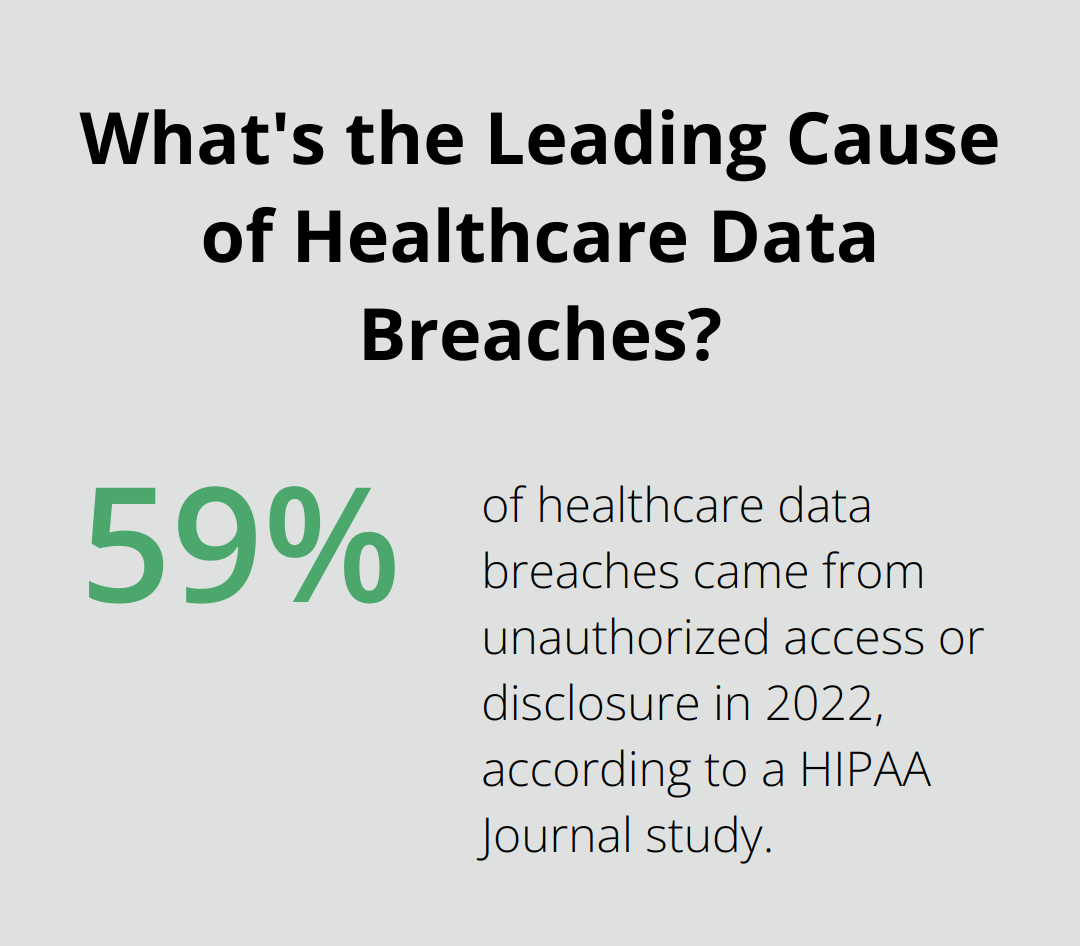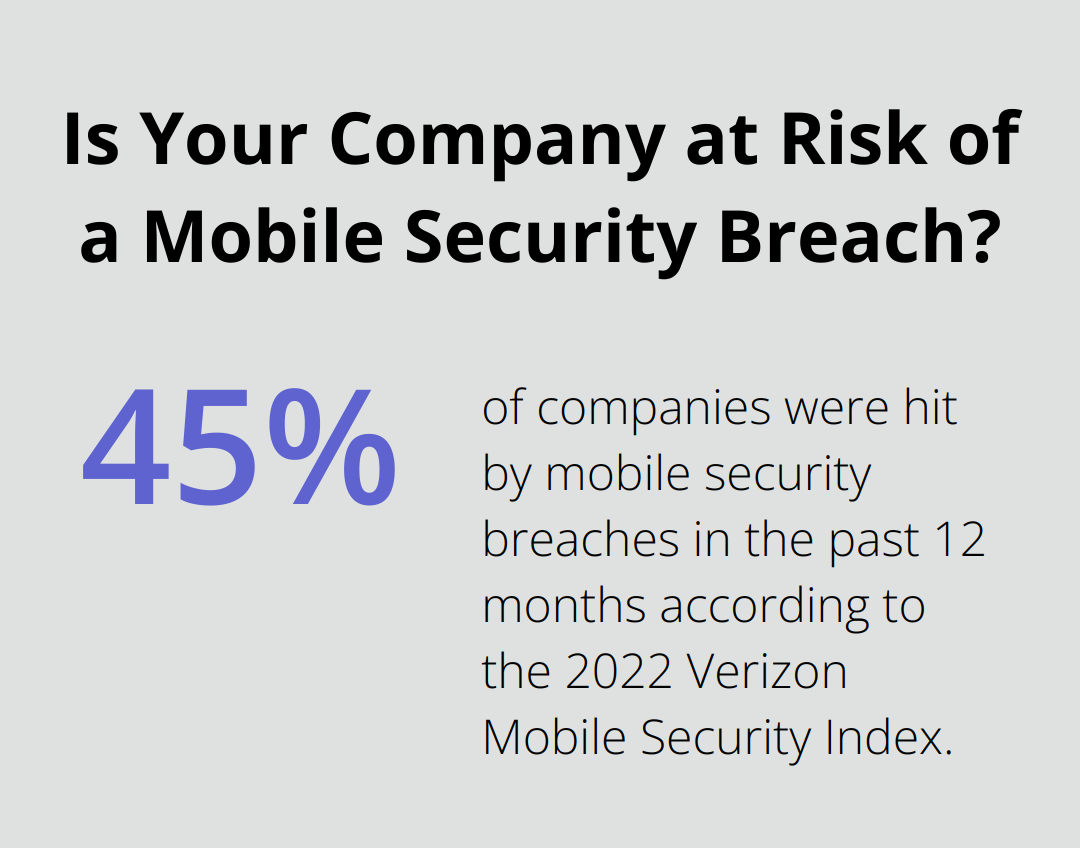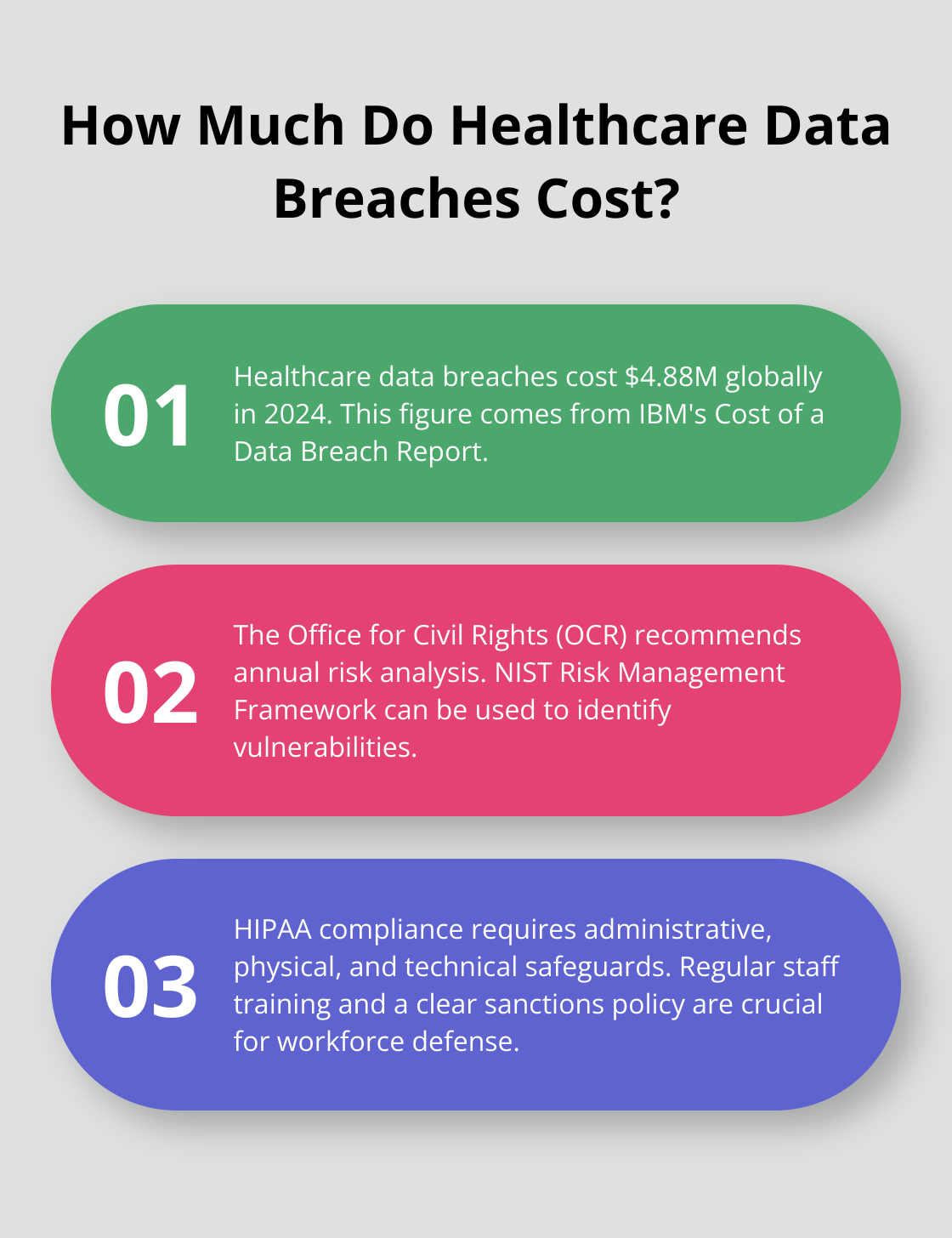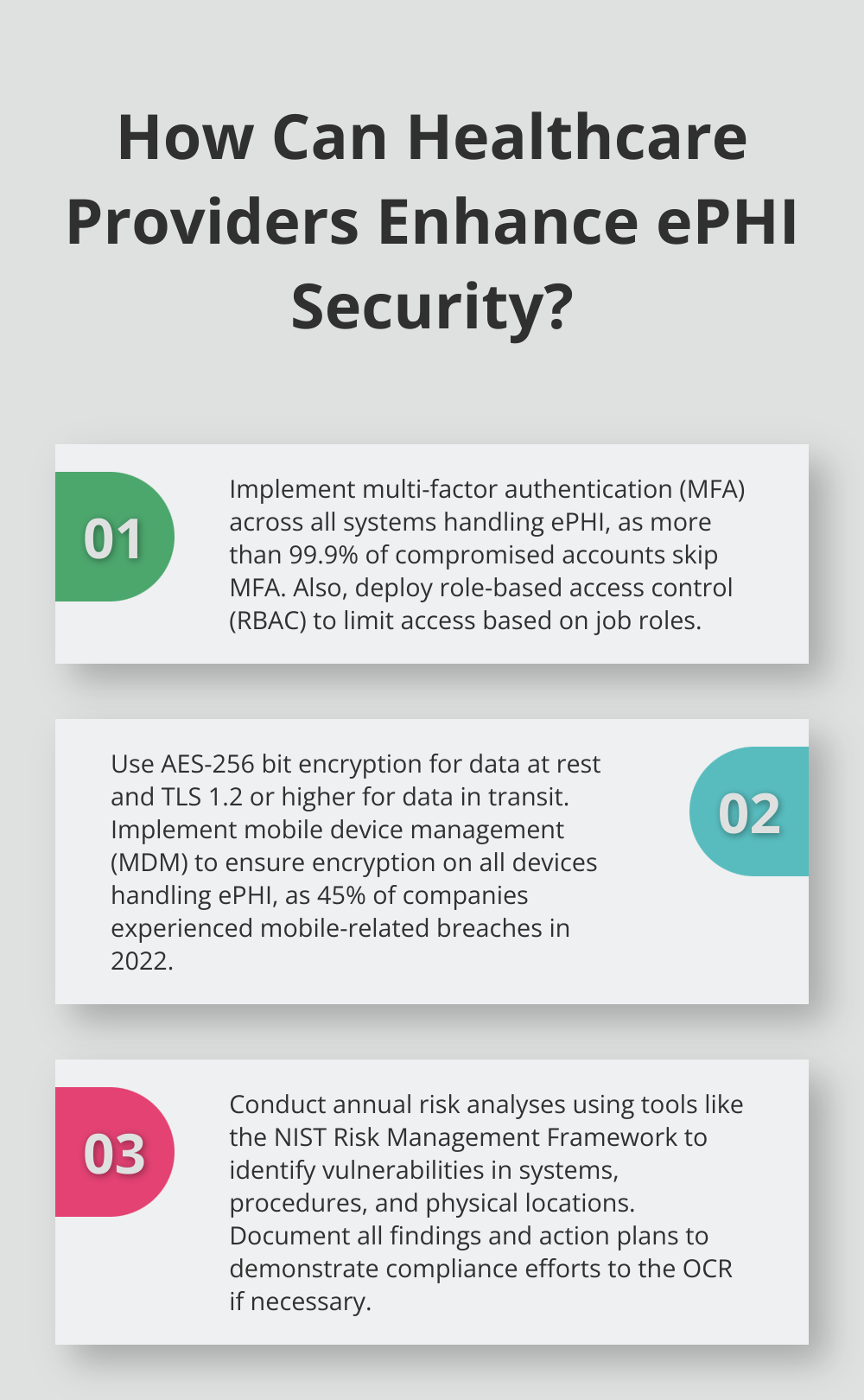HIPAA compliance—it’s like the broccoli of healthcare IT. You can’t skip it, folks. If you’re an IT pro in the healthcare sector, you better know your stuff when it comes to HIPAA … or get ready to fork over those hefty fines.
At ScriberJoy, consider us your spinach smoothie—your all-in-one guide to staying on the right side of the HIPAA fence. This guide? It’s a must-have for anyone looking to untangle the intricate web of rules, technical safeguards, and admin jazz that is HIPAA compliance. Follow us, and keep your organization compliant, secure, and out of the penalty box.
What Are the HIPAA Rules IT Pros Must Know?
HIPAA-it’s not just a list of do’s and don’ts, more like the playbook for handling patient data in healthcare IT. Let’s deconstruct this beast into actionable nuggets you can start using… like, now.
The Privacy Rule: Your Data Handling Playbook
The Privacy Rule… think of it as the traffic cop for Protected Health Information (PHI). As an IT guru, your gig is setting up systems so only the right folks get access. That means getting cozy with role-based access controls and audit trails. And here’s a scary stat to chew on-a 2022 HIPAA Journal found 59% of healthcare data breaches came from unauthorized access or disclosure. (Yikes. Don’t add to that list!)
The Security Rule: Your Tech Safeguard Guide
Now, the Security Rule-where your tech wizardry shines. It’s all about locking down electronic PHI (ePHI). Here’s your checklist:
- Access controls (think unique user IDs, emergency access-sound familiar?)
- Audit controls, to see who’s poking around
- Integrity controls, keeping ePHI untainted
- Transmission security (psst… encryption is your BFF)

Oh, and by the way, a 2023 IBM report found the cost of a data breach in healthcare was a cool $4.45 million. These safeguards are about protecting that wallet as much as the data.
Why HIPAA Compliance Matters in Healthcare IT
HIPAA compliance-not just a formality, but crucial. Beyond dodging those wallet-emptying fines ($1.5 million per violation category per year, anyone?), it’s about holding onto patient trust and keeping sensitive info on lockdown.
In 2022, the Office for Civil Rights (OCR) was hit with 34,077 HIPAA complaints-a veritable landslide of potential migraines for IT folks. Cranking up HIPAA compliance is your ticket to safer, better healthcare.
Staying compliant means regular checkups-risk assessments, employee training, keeping up with new threats and rules. As an IT pro, you’re the frontline hero in this healthcare saga. Your vigilance and tech know-how? Essential for locking down patient data.
Now that we’ve nailed those fundamental rules, time to dive into technical safeguards. These steps are the core of your HIPAA compliance journey, demanding all your focus and tech prowess.
How to Implement Technical Safeguards for HIPAA Compliance
Locking Down Access
Alright, let’s talk access control. It’s the bedrock of your HIPAA compliance strategy. Start by slapping on multi-factor authentication (MFA) across every system that’s got its hands on ePHI. Here’s a mind-bender: More than 99.9% of compromised accounts skip MFA-meaning they might as well just hand over the keys. Password spray, phishing, password reuse … yeah, they’re a real trio of doom. This stat alone should light a fire under your MFA efforts.

Enter role-based access control (RBAC)-your next-level move. RBAC’s all about serving up just what folks need-no more, no less. Nurses? They’re not playing with billing info. Billing folks? They don’t need full-on medical charts. Cutting down on access means cutting down the risk of internal breaches. Simple.
Encryption: Your Data’s Bodyguard
Encryption! It’s like your data’s bouncer, whispering secrets both in rest (parked on a server) and on the move (zipping through networks). NIST is calling for AES-256 bit encryption for parked data and TLS 1.2 or higher when data’s on the go.
Oh, and don’t you dare skimp on mobile devices. The 2022 Verizon Mobile Security Index? It paints a picture-45% of companies hit by breaches in the past 12 months. That’s a 22% hike year-over-year. Steer clear of these digital landmines by rolling out mobile device management (MDM) to ensure encryption is on every device wading into ePHI waters.
Monitoring Access and Ensuring Integrity
Think of audit controls and integrity controls like your data’s dynamic duo. Turn on those logging systems to watch every ePHI entry like an eagle-eyed chaperone. But hey-don’t just collect logs; dive into them. Keep your Security Information and Event Management (SIEM) tools sharp for spotting those rogue patterns that hint at trouble brewing.
Integrity controls? They’re your ePHI’s guardian, warding off unauthorized meddling. Hash functions for data integrity checks-do it. Version control systems for ePHI changes? Absolutely.
Securing Data Transmission
Transmission security-it’s like a VIP pass for your data’s cross-network travels. Virtual Private Networks (VPNs) are the armored convoy, creating an encrypted tunnel that gives a firm middle finger to prying eyes. Essential for remote work setups.
And email-yes, it’s a HIPAA minefield. Secure email gateways can wield automatic encryption like a digital bodyguard. Some solutions even throw down barriers against staff firing off ePHI to the wrong folks.
Keeping these technical safeguards in shipshape takes ongoing love and maintenance. Stay sharp and you’re building a bulwark against breaches and HIPAA slip-ups. Next up, let’s examine how administrative and physical safeguards team up with these tech picks to weave a full-fledged HIPAA compliance tapestry.
How to Fortify Your HIPAA Defenses
HIPAA compliance-you know, it’s not just about tech gizmos. It’s a whole kit and caboodle approach, covering everything from admin oversight to physical barriers. So, let’s dig into making your HIPAA defense rock-solid.
Risk Analysis: Your HIPAA Compass
Kick-off with a full-on risk analysis. Check this out: Risk analysis is the cornerstone for putting effective (and let’s be honest, necessary) safeguards in place-admin, physical, tech, you name it. The Office for Civil Rights (OCR) says you should be on this at least once a year. Get cozy with tools like the NIST Risk Management Framework to sniff out weak spots in your systems, your procedures, and even your physical digs.

In 2024, healthcare data breaches tagged a mind-blowing USD 4.88M globally, according to IBM’s Cost of a Data Breach Report. Yes, staggering… and it’s screaming the need for sharp risk analysis. Document every tiny detail-from looming threats to your action plans. If the OCR comes knocking, these docs? Your ticket to survival.
Workforce: Your First Line of Defense
The team-your people can either ace it or flop it. Regular, beefed-up training is key. Steer clear of those mind-numbing PowerPoints. Go for interactive shindigs, real-world drills, even simulated phishing capers.
Put down a no-nonsense sanctions policy for HIPAA slip-ups. Lay out the repercussions nice and clear. But also-nurture a vibe where the staff isn’t scared to flag problems. No witch hunts, just teamwork.
Prepare for Disaster
Map out a killer incident response plan. Run it through the wringer with tabletop exercises regularly. Toss in situations like ransomware attacks-plenty of healthcare setups felt that punch lately.
Your backup plan should cover it all-data, operations, everything if your systems belly up. Loop your business buddies into your disaster game plan.
Physical Safeguards: The Often-Overlooked Frontier
Even in this plugged-in world, don’t sleep on physical security. Lock it down-strict access to spots with ePHI. Pop in security cams, badge systems, and visitor logs. For work stations? Privacy screens and set ’em to log off automatically if idle.
With docs glued to smartphones for patient stuff, mobile device management is crucial. Make sure they’re all encrypted and can be wiped clean if they vanish into thin air.
Staying HIPAA compliant isn’t a one-time deal-it’s an ongoing saga. Learning, adapting, strategizing… repeat. Your patients’ trust and your outfit’s reputation hinge on nailing this down, year-round.
Final Thoughts
HIPAA compliance for IT pros? It’s your never-ending merry-go-round-constant vigilance, adaptation. Gotta keep those technical safeguards robust (and those admin and physical controls? Comprehensive, my friend). Regular risk assessments, employee training-they’re the bread and butter of a solid HIPAA game plan.

Why bother, you ask? Simple. It’s about patient trust-preserving it-and keeping healthcare data squeaky clean. As tech struts forward, IT whizzes need to be two steps ahead, ensuring sensitive info remains locked down. The Office for Civil Rights (OCR) throws a lifeline-guidance and training materials-to keep IT champs in the loop on HIPAA’s latest and greatest.
At ScriberJoy, we get it-HIPAA compliance is the cornerstone of healthcare IT. Our medical transcription software isn’t just about ticking boxes; it’s about offering healthcare providers secure, top-notch documentation. We’re all about sticking to those HIPAA rules while cranking out high-quality transcription services.

Leave a Reply
You must be logged in to post a comment.